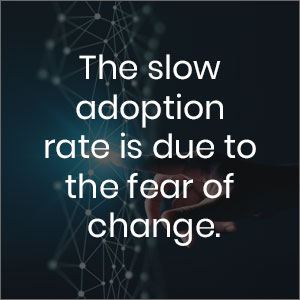There is no doubt that technology is rapidly evolving, affecting all industries and sectors – from health care to legal – in a myriad of ways. Industries becoming more and more digital is now the norm. And the transition from regular work to a more digital way of operating must happen in order for businesses to keep up with the competition.
At this point in time, technology is not going anywhere but upward. So it is high time to embrace digital transformation in the legal industry. Although it can be scary at first, especially if you are not tech-savvy, to begin with, just know that it will enhance your job and help make you more efficient in the long run. Global spending on digital transformation will increase by 17.1% per annum between 2019-2023.
The legal industry, in fact, can have many opportunities by heading into the digital transformation realm. Technology has significantly impacted legal functions and services, allowing legal teams to focus on other tasks that require attention. Yet despite all of its benefits, digital transformation in the legal industry has been relatively slow.
THE FEAR OF CHANGE
Technology’s slow adoption rate can be partly attributed to the fear of technology transforming regular functions. Those who enter the legal industry study the law for years. They work hard to get to where they are at and don’t want their careers to change suddenly. Lawyers may not appreciate the true value of legal tech, in particular, and are slow to adapt to the trend of digital transformation, as a result.
For in-house legal teams and law firms, there is also concern over adopting fast-moving business processes and developing new skills and mindsets. That also explains the slow adoption rate when it comes to legal tech. To change this, though, legal teams and in-house counsels must better understand the advantages of digital transformation and legal technology.
DIGITAL TRANSFORMATION IN THE LEGAL INDUSTRY
General counsels, legal teams, and others in the legal industry may fear that when digital transformation is introduced to their workplace, legal technology will replace their jobs altogether – or completely transform them to the point that they are no longer familiar. That is because the legal profession has always been rather “linear,” with everyone going through a similar study process to get to where they are currently. Now, with digital transformation on the rise, it only makes sense for those pursuing law to learn technical skills also. That is in order to adapt to the trend.
The slow adoption rate is due to the fear of change. Simply put, digital transformation has emerged to make the lives of those in the legal industry much easier. The same is true for artificial intelligence software. It has improved efficiency and productivity and allowed legal teams to focus on other crucial tasks. According to IDC, global spending on digital transformation technologies and services will increase by 17 percent per annum between 2019 and 2023. So it is important to start adapting to this change today.
WITH THE USE OF TECHNOLOGY, LAWYERS CAN:
- Serve clients faster due to automated workflows and contract management

- Access information whenever they want, given it’s digitized and online instead of on paper (This also makes researching easier to do!)
- Expand services to other markets
THE TIME IS NOW
For legal digital transformation to be successful, legal teams must learn to adapt to these new technologies. They must fully understand how to improve their legal functions on a day-to-day basis. Check out our e-book on the ‘Three Stages of Legal Digital Transformation.”
Ultimately, the legal industry stands to benefit enormously from the trend of digital transformation, just as other industries and sectors have in recent years. Now, take the first step in revolutionizing your legal team’s contract management – together with ContractPodAi.
Author:

Manpreet Dhillon
Connect with us on Linkedin


